Abstract
1. This paper presents an analysis of the efficiency of performance at the absolute threshold of human vision. The data are from the same series as the previous papers (Hallett, 1969b, c) and consist of frequency-of-seeing curves, thresholds, false positive rates and equivalent background measurements, accumulated as small samples over a number of days.
2. Quantum efficiency is defined here as the ratio of the thresholds of an ideal and a real detector performing the same task with the same sampling error. This avoids the problem as to whether the frequency-of-seeing curve of the real detector is exactly a Poisson sum or not.
3. The long-term quantum efficiency can be low (about 0·04) as a result of drifts in the mean threshold.
4. The average short-term quantum efficiency is in the region of 0·1, which is roughly the physiological limit set by Rushton's (1956b) measurements of rhodopsin density in the living rods. If this is correct, then the absorption of a quantum, and not the bleaching of a rhodopsin molecule, is sufficient for the generation of a neural event.
5. Application of a simple signal/noise theory to the data gives solutions close to those suggested by Barlow (1956) and shows that false positives almost invariably arise from errors subsequent to the signal/noise decision process.
Full text
PDF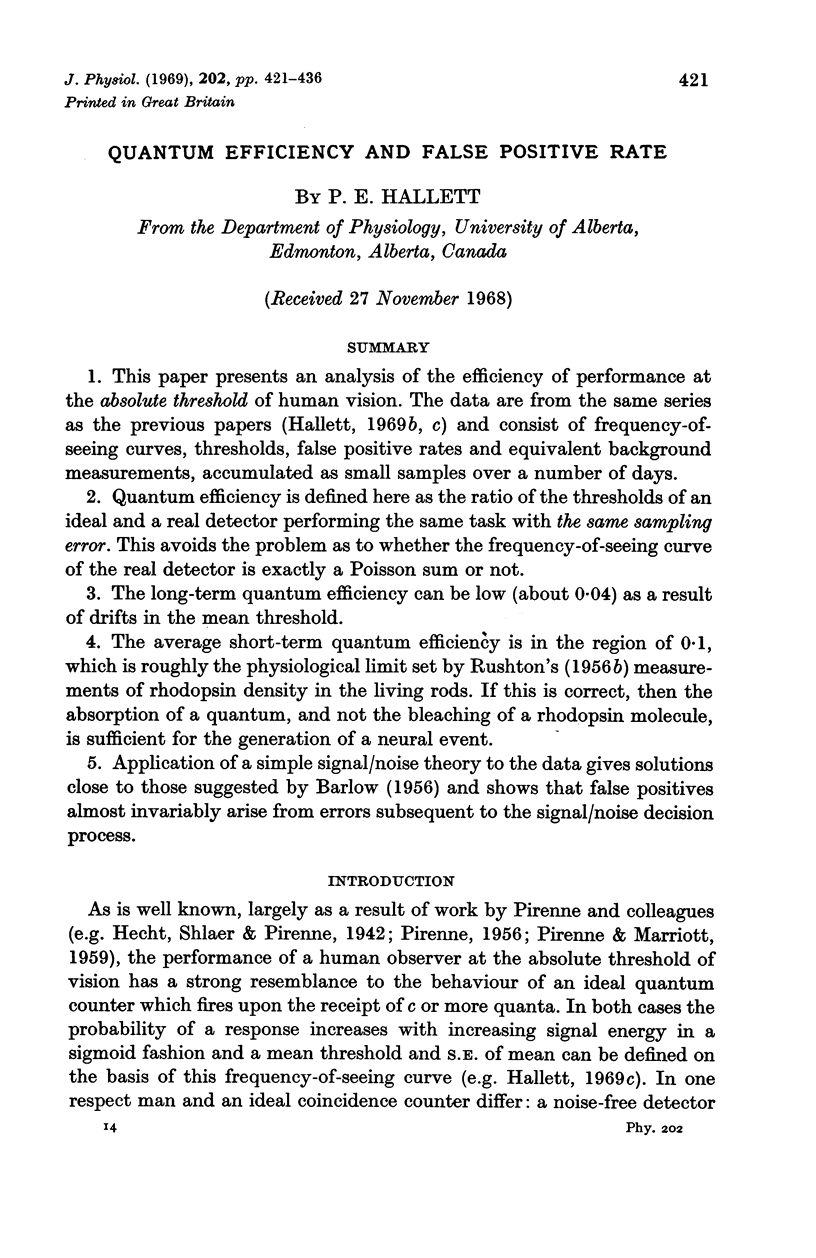
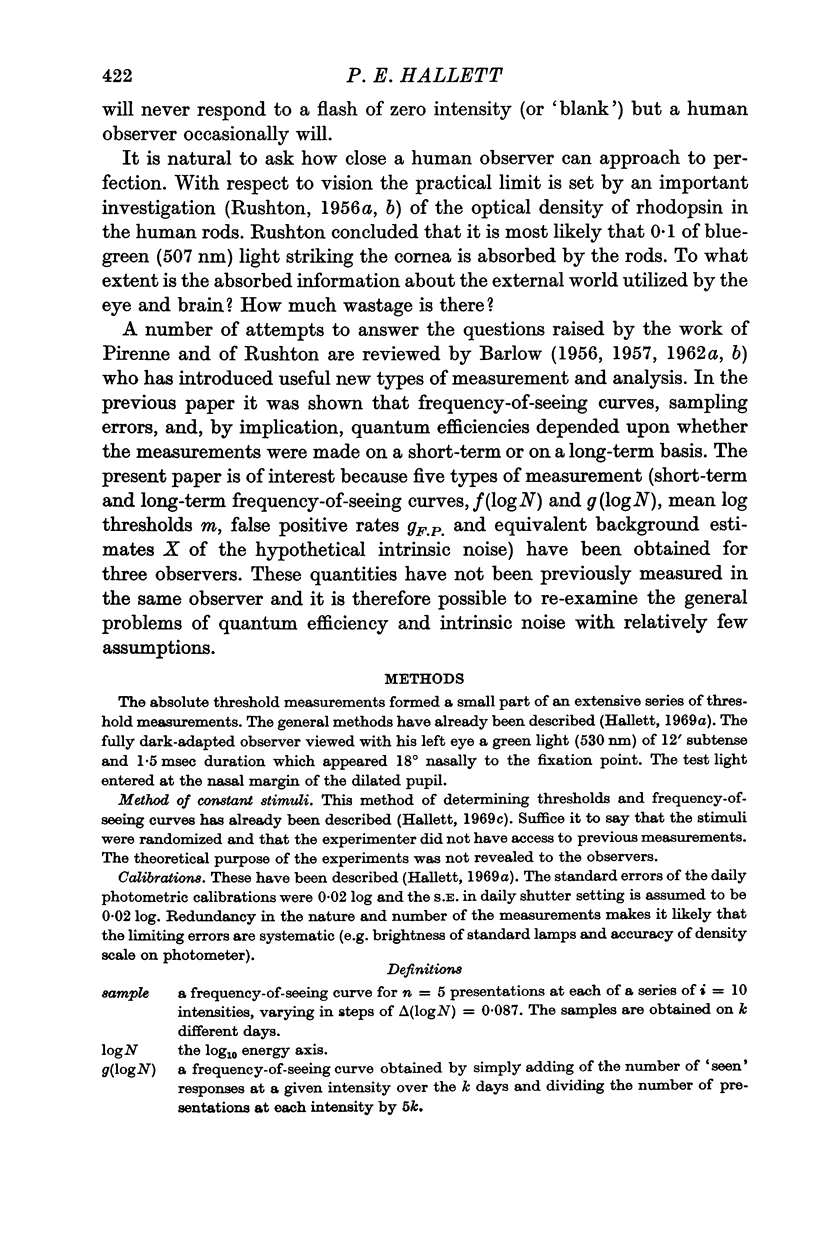
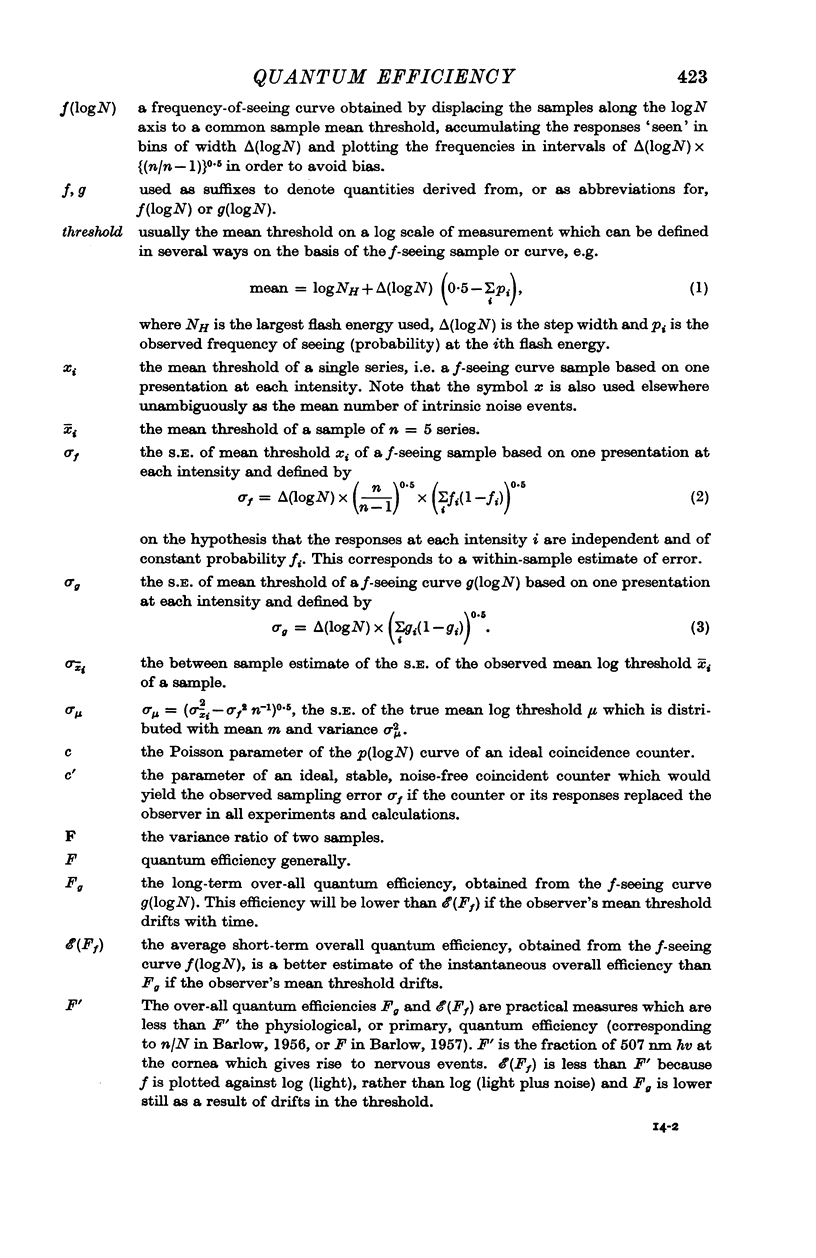
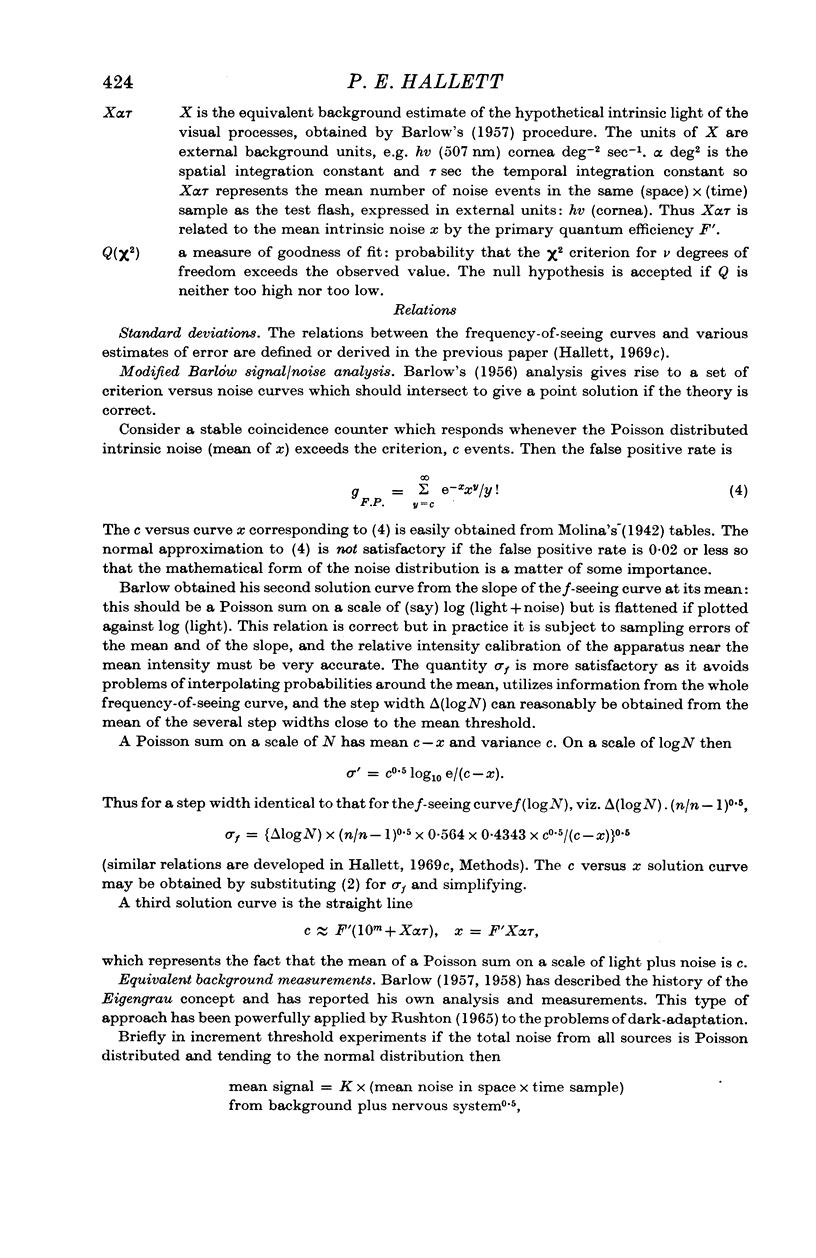
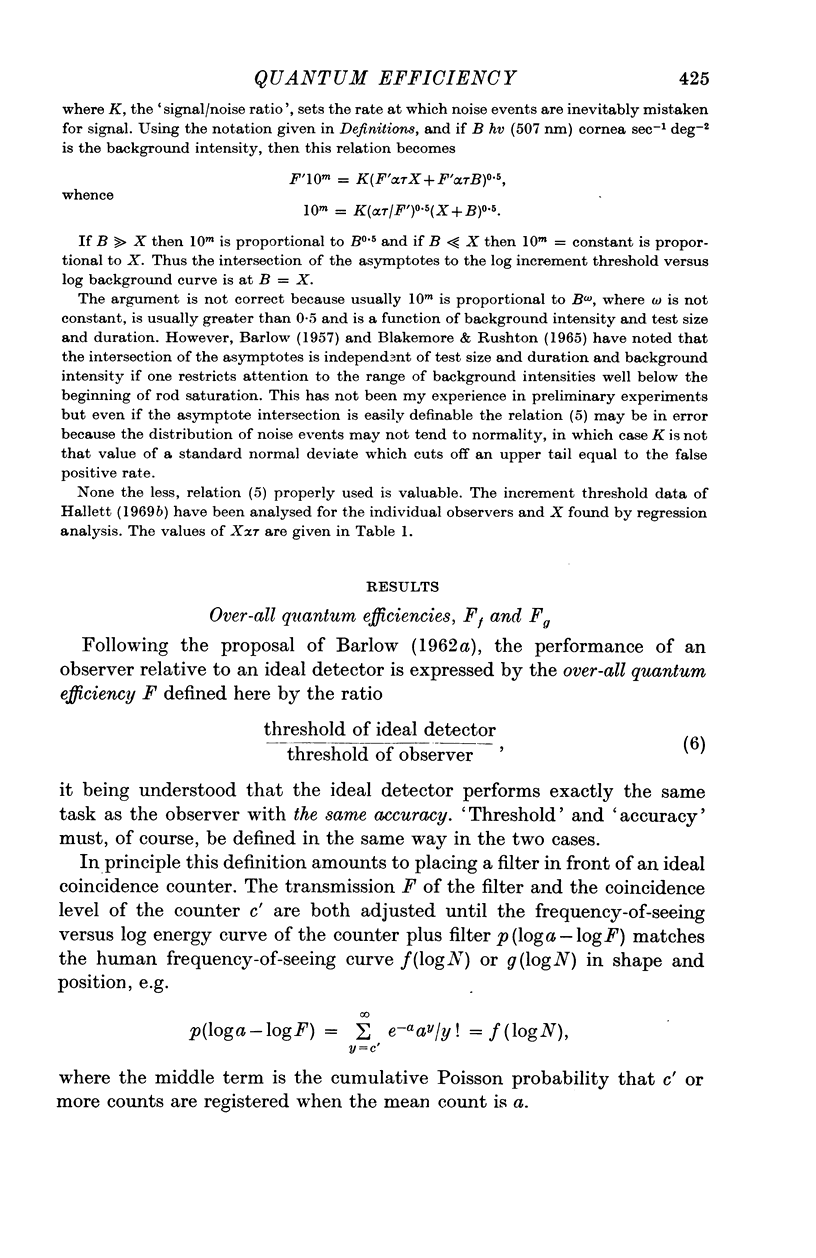
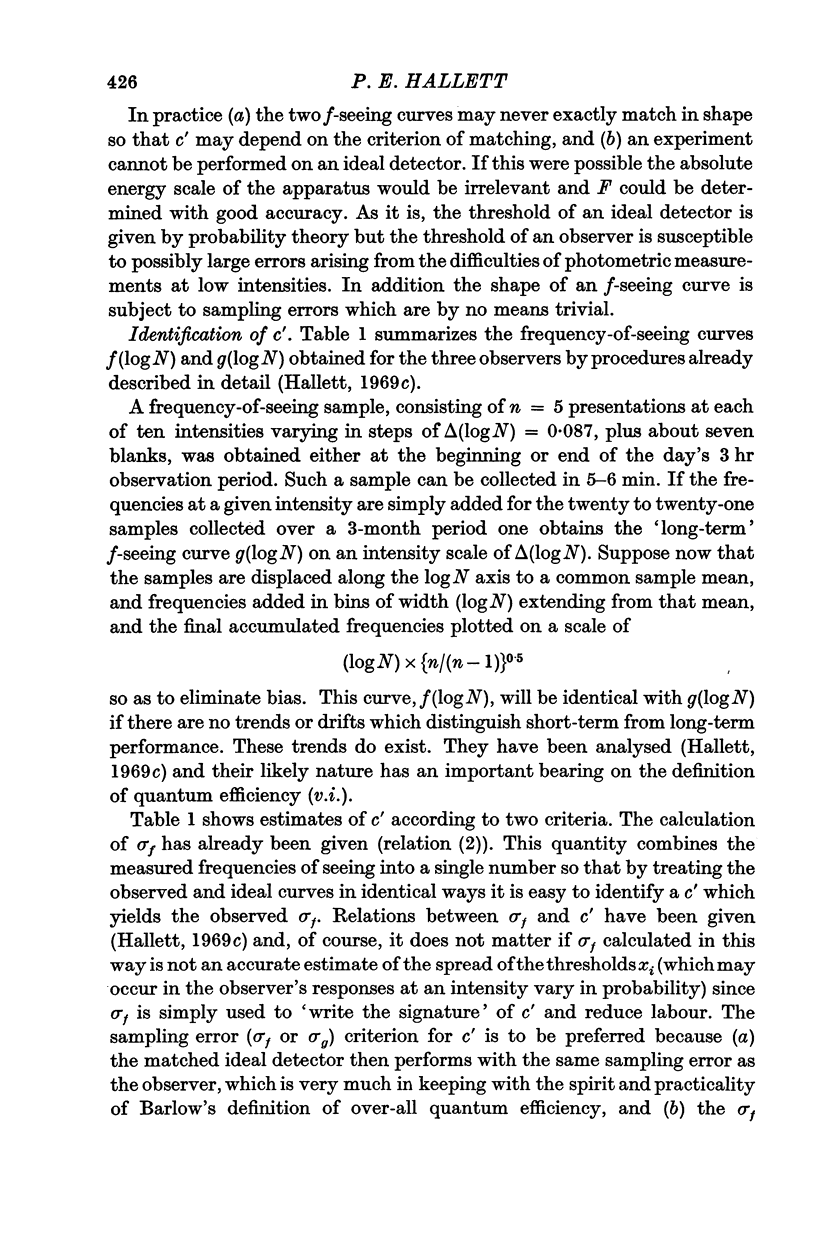
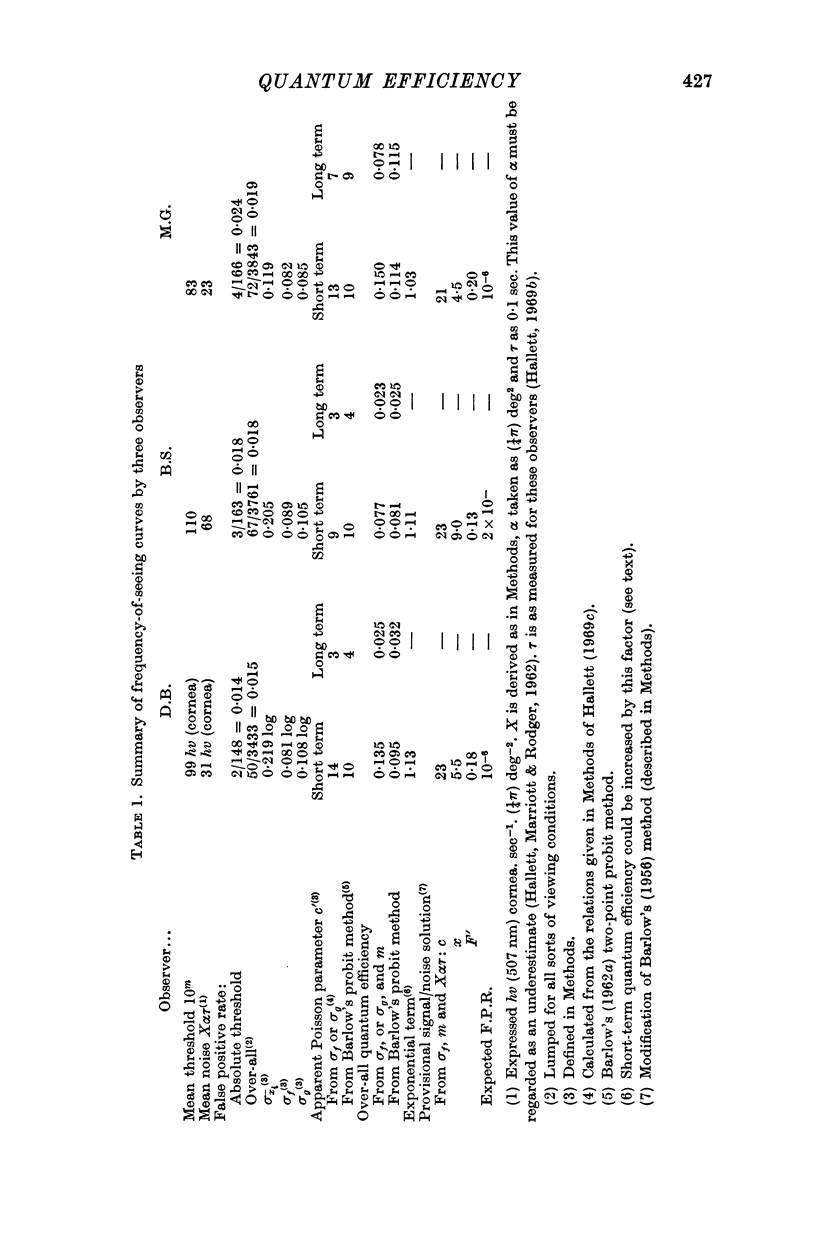

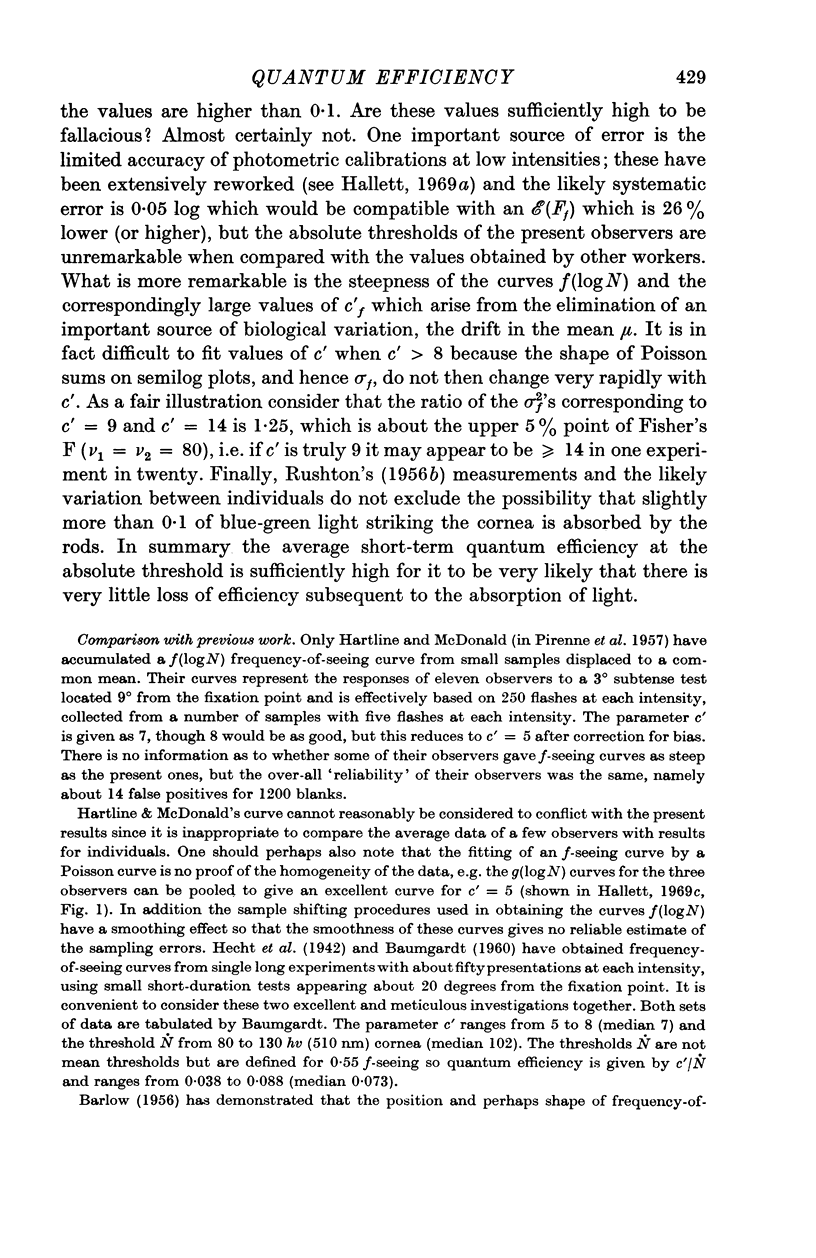
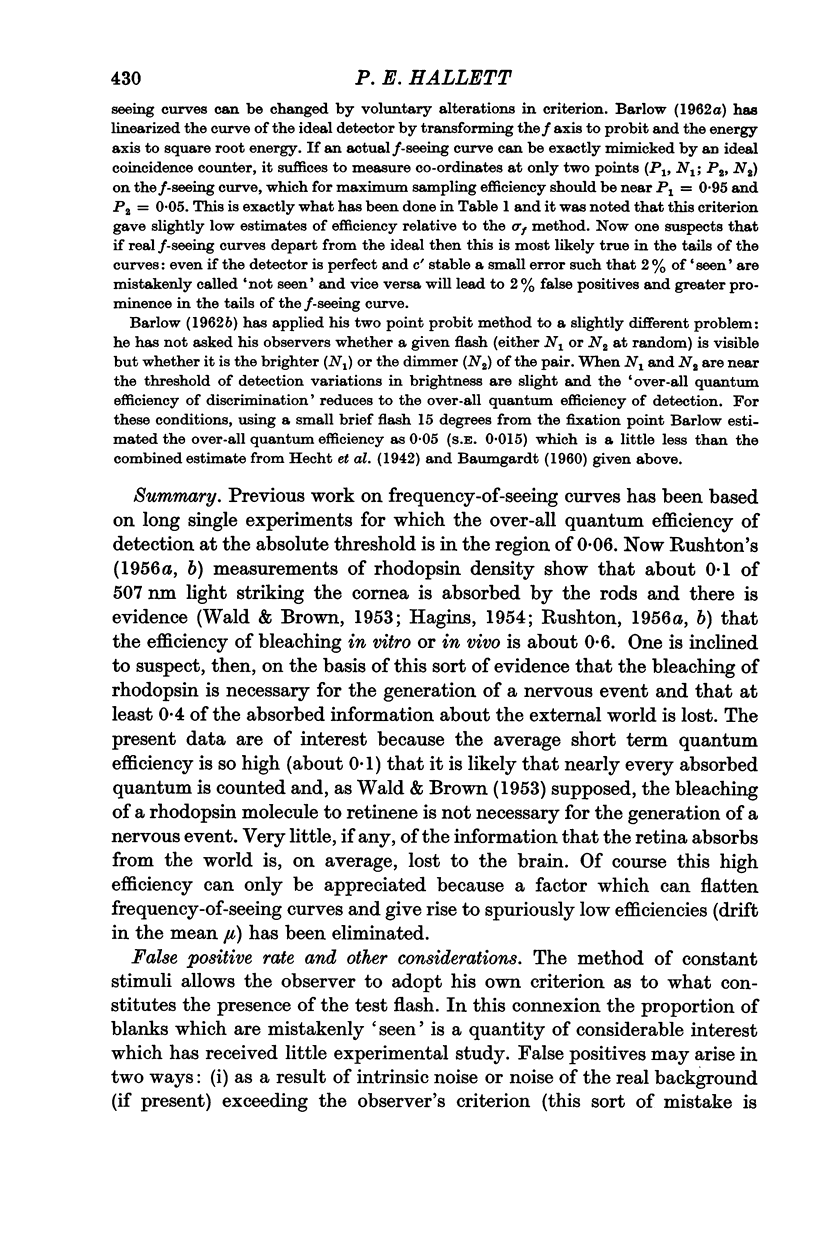
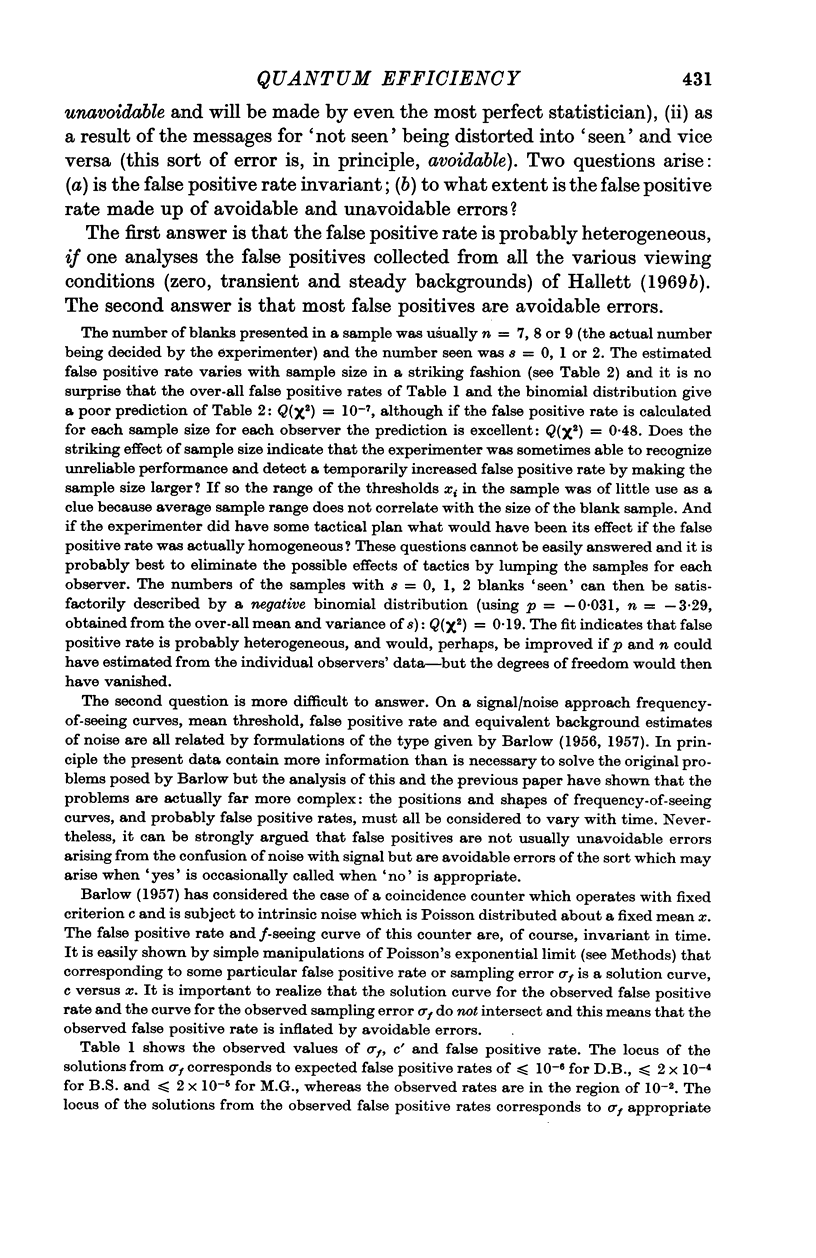
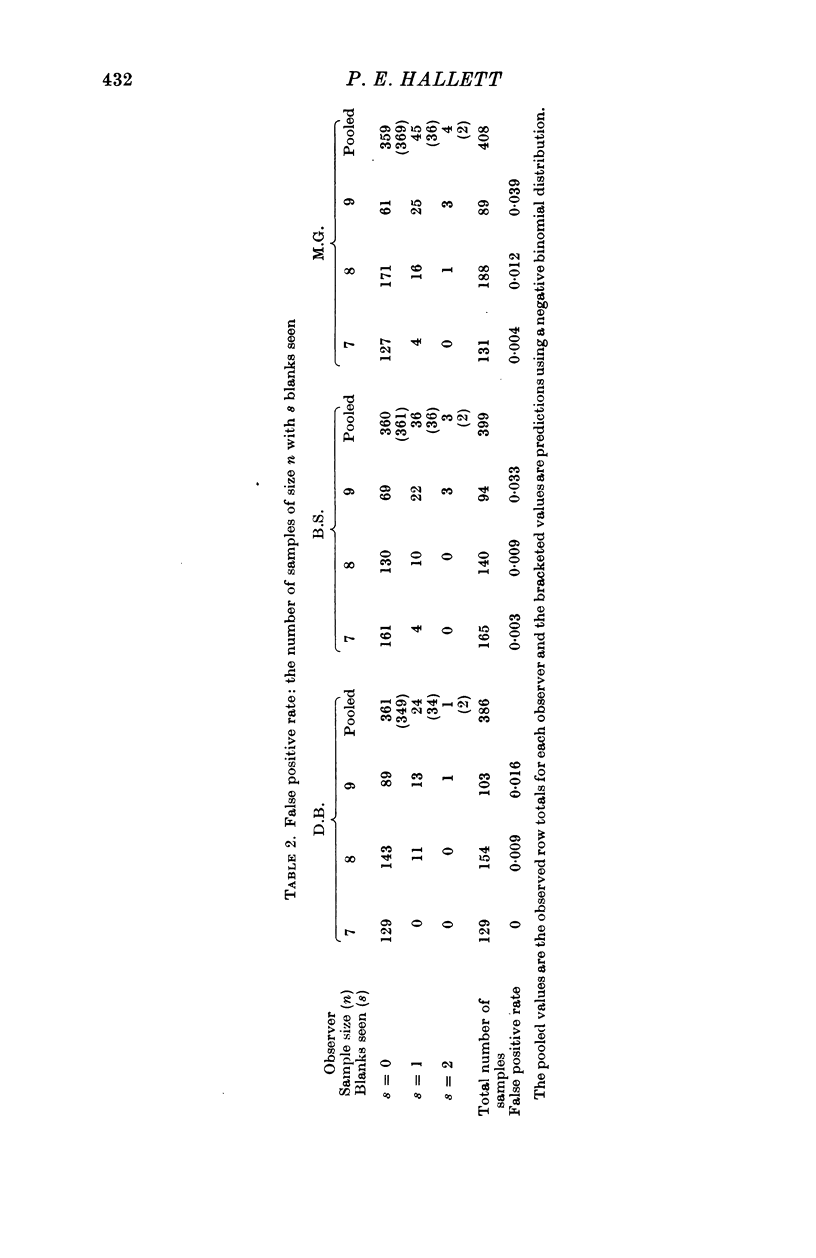
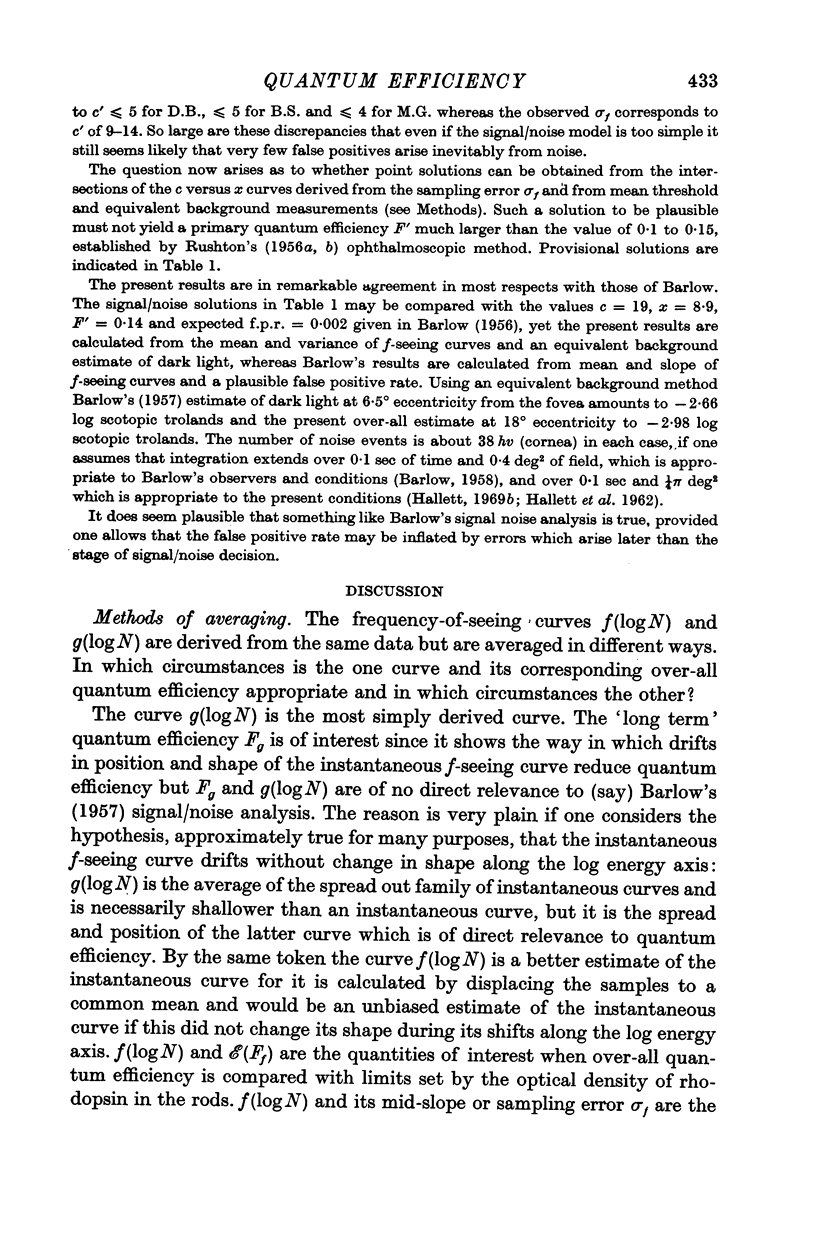
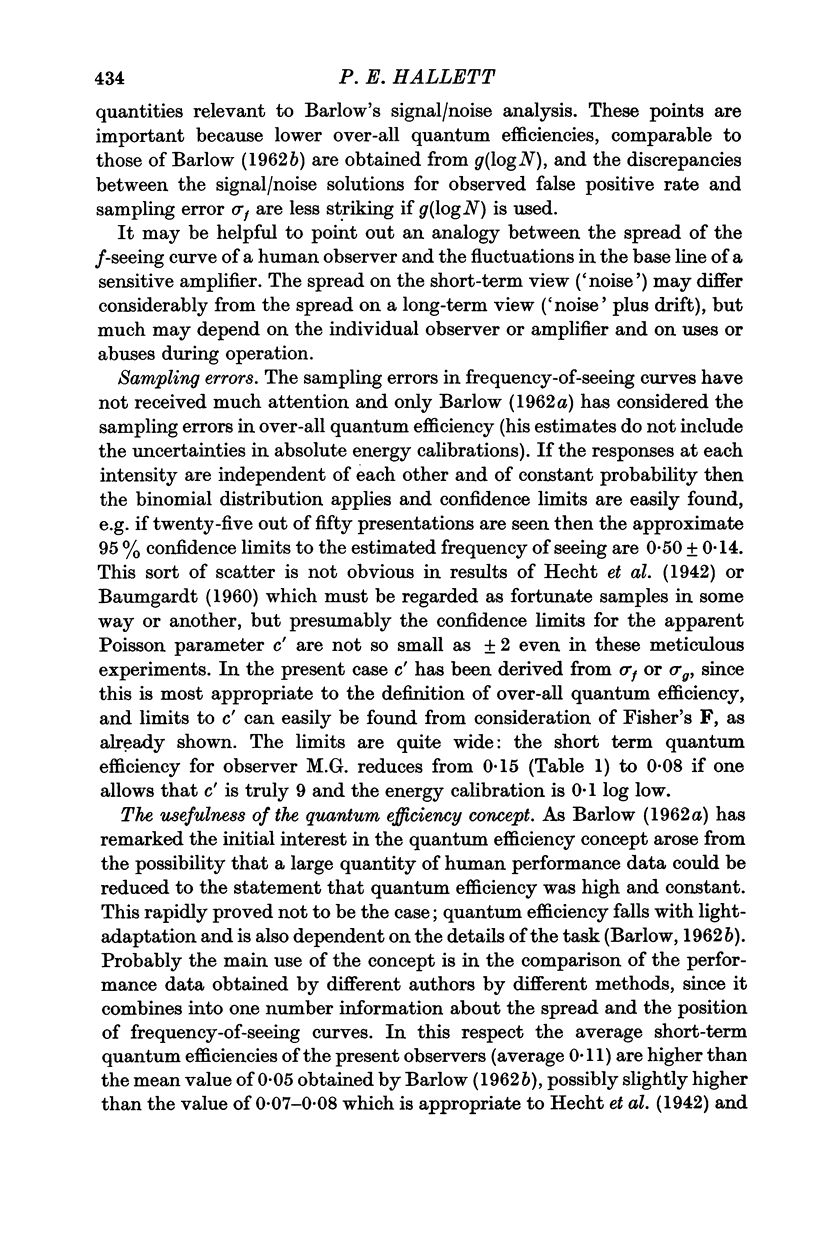

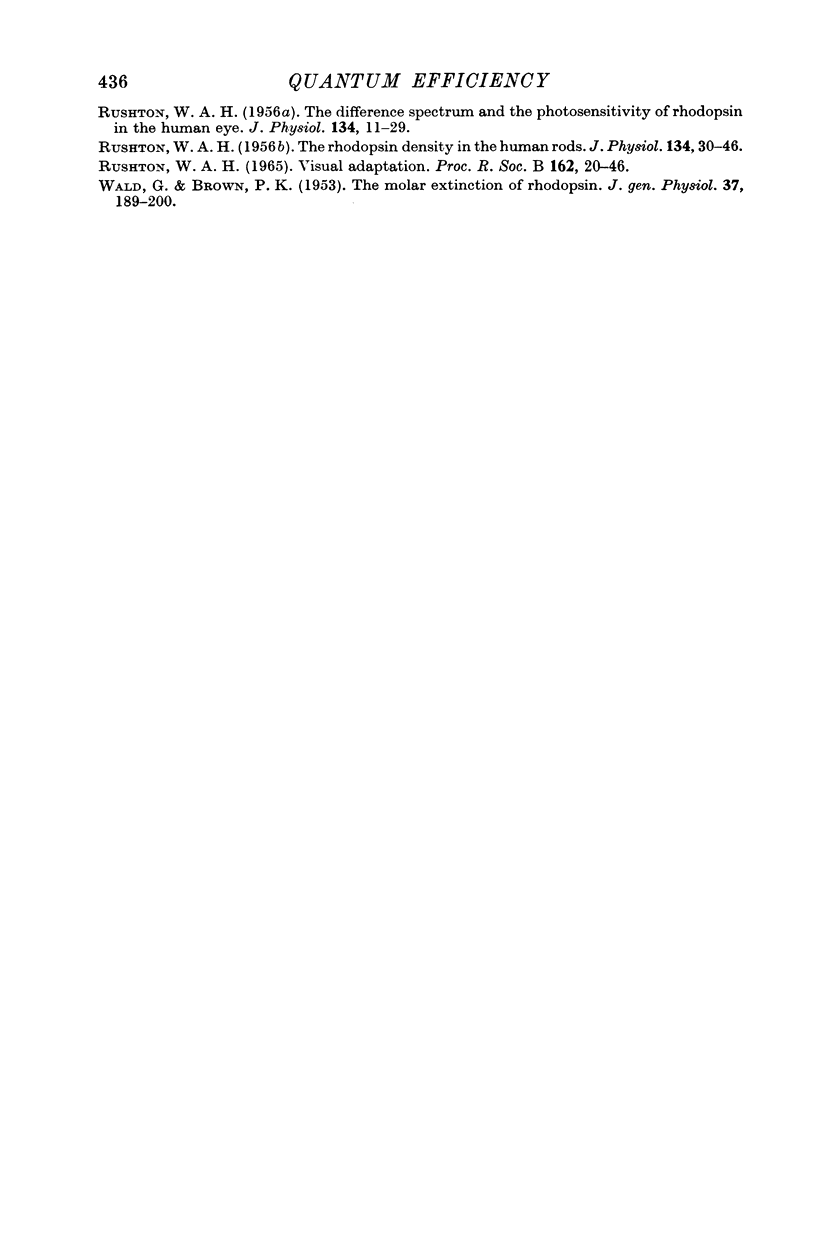
Selected References
These references are in PubMed. This may not be the complete list of references from this article.
- BARLOW H. B. A method of determining the over-all quantum efficiency of visual discriminations. J Physiol. 1962 Jan;160:155–168. doi: 10.1113/jphysiol.1962.sp006838. [DOI] [PMC free article] [PubMed] [Google Scholar]
- BARLOW H. B. Increment thresholds at low intensities considered as signal/noise discriminations. J Physiol. 1957 May 23;136(3):469–488. doi: 10.1113/jphysiol.1957.sp005774. [DOI] [PMC free article] [PubMed] [Google Scholar]
- BARLOW H. B. Retinal noise and absolute threshold. J Opt Soc Am. 1956 Aug;46(8):634–639. doi: 10.1364/josa.46.000634. [DOI] [PubMed] [Google Scholar]
- BARLOW H. B. Temporal and spatial summation in human vision at different background intensities. J Physiol. 1958 Apr 30;141(2):337–350. doi: 10.1113/jphysiol.1958.sp005978. [DOI] [PMC free article] [PubMed] [Google Scholar]
- Barlow H. B. Measurements of the quantum efficiency of discrimination in human scotopic vision. J Physiol. 1962 Jan;160(1):169–188. doi: 10.1113/jphysiol.1962.sp006839. [DOI] [PMC free article] [PubMed] [Google Scholar]
- Blakemore C. B., Rushton W. A. Dark adaptation and increment threshold in a rod monochromat. J Physiol. 1965 Dec;181(3):612–628. doi: 10.1113/jphysiol.1965.sp007786. [DOI] [PMC free article] [PubMed] [Google Scholar]
- HAGINS W. A. The photosensitivity of mammalian rhodopsin in situ. J Physiol. 1954 Nov 29;126(2):37P–37P. [PubMed] [Google Scholar]
- HALLETT P. E., MARRIOTT F. H., RODGER F. C. The relationship of visual threshold to retinal position and area. J Physiol. 1962 Feb;160:364–373. doi: 10.1113/jphysiol.1962.sp006851. [DOI] [PMC free article] [PubMed] [Google Scholar]
- Hallett P. E. Impulse functions for human rod vision. J Physiol. 1969 Jun;202(2):379–402. doi: 10.1113/jphysiol.1969.sp008817. [DOI] [PMC free article] [PubMed] [Google Scholar]
- Hallett P. E. Rod increment thresholds on steady and flashed backgrounds. J Physiol. 1969 Jun;202(2):355–377. doi: 10.1113/jphysiol.1969.sp008816. [DOI] [PMC free article] [PubMed] [Google Scholar]
- Hallett P. E. The variations in visual threshold measurement. J Physiol. 1969 Jun;202(2):403–419. doi: 10.1113/jphysiol.1969.sp008818. [DOI] [PMC free article] [PubMed] [Google Scholar]
- RUSHTON W. A. The difference spectrum and the photosensitivity of rhodopsin in the living human eye. J Physiol. 1956 Oct 29;134(1):11–29. doi: 10.1113/jphysiol.1956.sp005622. [DOI] [PMC free article] [PubMed] [Google Scholar]
- RUSHTON W. A. The rhodopsin density in the human rods. J Physiol. 1956 Oct 29;134(1):30–46. doi: 10.1113/jphysiol.1956.sp005623. [DOI] [PMC free article] [PubMed] [Google Scholar]
- RUSHTON W. A. VISUAL ADAPTATION. Proc R Soc Lond B Biol Sci. 1965 Mar 16;162:20–46. doi: 10.1098/rspb.1965.0024. [DOI] [PubMed] [Google Scholar]
- WALD G., BROWN P. K. The molar extinction of rhodopsin. J Gen Physiol. 1953 Nov 20;37(2):189–200. doi: 10.1085/jgp.37.2.189. [DOI] [PMC free article] [PubMed] [Google Scholar]


